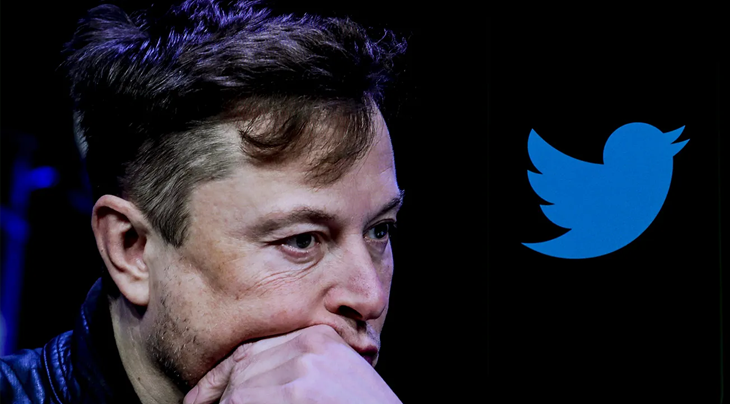The fastest way to become a millionaire is to first become a billionaire and then invest in a football club, airline or buy Twitter.
This week's Twitter saga reminded me of the first principle of effective management: listen before talking. Look, I sympathize because listening is a challenge for me as well – just ask my family! By no coincidence, listening is also the first principle of marketing: I am constantly reminded I differ from my customers: I prefer text, they prefer video, I value frankness, they value perceived authority, etc. Of course, we also agree on many things, but the point is you have to do your research. In my career, that showed up both as hugely wasteful overspending and as insufficient underspending. Here are a few key examples:
Back in the 20 noughties, I consulted a car manufacturer on a $250M question: how much advertising budget to launch the first mass-produced and marketed electric vehicle in the world? While they were only expecting to sell a few thousand units in the first year, a consultancy company argued for a $250M US advertising budget because the halo effect of sustainability and technology would lift sales of their existing car models, especially their high-margin but underperforming luxury brand. That seemed overly optimistic to me, the eternal optimist, coming from my publication on US car manufacturersoverestimating how the market would react to their ‘pioneer' products, also given fast competitive imitation.
I proposed to study what the most successful hybrid, Prius, had done for Toyota's sales a few years earlier – controlling for Consumer Incentives (CI), gasoline prices and media spending by both Prius and Toyota's ‘brown products' (BP). Leveraging time series econometrics, I discovered that Prius' image (the % of respondents having an ‘Excellent Opinion' or EXCOP) only started to lift Toyota's image after about 5 years (when its second model became successful):
In turn, this rising tide of the umbrella brand only lifted its ‘brown' products sales in the single digit percentages. Digging deeper, I sat in sales conversations where the consumer walked in for a Prius and left with a Corolla (after realizing the price differential). Indeed, my econometric models quantified that advertising Prius did lift sales of cheaper products, but not for expensive products, such as Avalon, Highlander or RAV4.
Armed with this knowledge, I calculated how much Nissan should spend on launching the Leaf if it would yield a fast umbrella brand advantage to the extent Prius did for Toyota. My advice was a much more modest $100M – even for this best-case scenario. Moreover, I visualized how Toyota kept on spending the lion share of its media budget on its other products – not Prius.
Needless to say, the company went for the other consultants' recommendation, believing that ‘Nissan LEAF is a magnet, drawing new and existing consumers closer to our brand', and ‘thanks to the early success of the Nissan LEAF, Nissan has become the undisputed leader in sustainability, propelling the entire automobile industry toward a future that no longer relies on a single, non-renewable resource.'
Flash forward to 2022, and it is clear the company greatly over-estimated its ‘first mover advantage' and ‘brand halo, highlighting Nissan's technological strength and commitment to the environment' Instead, the company's market share has not significantly increased, and the Leaf has seen its line up reduced, and is fighting rumors it will be discontinued altogether by 2025. Over the full past decade, the Leaf only sold 170,000 vehicles vs 500,000 for Tesla in the first half of 2022 alone
At the same time, many engineering-focused companies underspend on marketing communication, implicitly believing that a ‘better mousetrap' will ‘sell itself'. Back in 2009, Jeff Bezos remarked that ‘Advertising is the price you pay for having an unremarkable product or service'. Two years later in Istanbul, we performed a marketing mix analysis for Sony Eurasia and for Silverline kitchen appliances distinguishing Above the Line (ATL) and Below the Line (BTL) marketing. The results showed that Sony enjoyed a wonderful brand image but lost market share at the point of purchase due to insufficient BTL marketing. In contrast, Silverline did great once it got the consumer inside their company-owned stores, but did not spend enough ATL to get customers inside these beautiful locations, which often went empty.
Underspending is also widespread in challenging times, when many companies have the knee-jerk reaction to cut marketing budgets across the board. Instead, wise decisions consider the specifics of the current and potential business, ad channels and products, and – sometimes even – research showing that innovation and marketing communications are the key weapons to maintain price premium and fight cheaper brands. New products launched during recessions are more successful on average than new products launched during boom times, as shown in evidence from 60 years in the automobile industry and across dozens of fast moving consumer goods. Likewise, companies that smart spend on effective and efficient ad channels can leverage the recession to overtake competitors – as Hyundai and many others have demonstrated.
Coming back to my opening line, this week demonstrated the importance of listening to stakeholders, from customers to employees and, in Elon Musk's case – one's friends. That is the underlying message of Amazon's Leadership Principle ‘Leaders are Right, a Lot'. I must admit I laughed when I first read it – circular reasoning alert! However, the description explain how leaders get this ‘strong judgment and good instincts': ‘They seek diverse perspectives and work to disconfirm their beliefs.' In other words, they listen and actively aim to stress test their own ideas with knowledgeable stakeholders.

